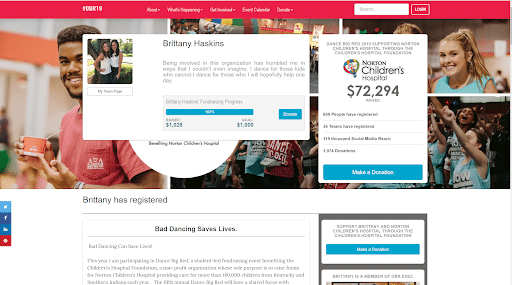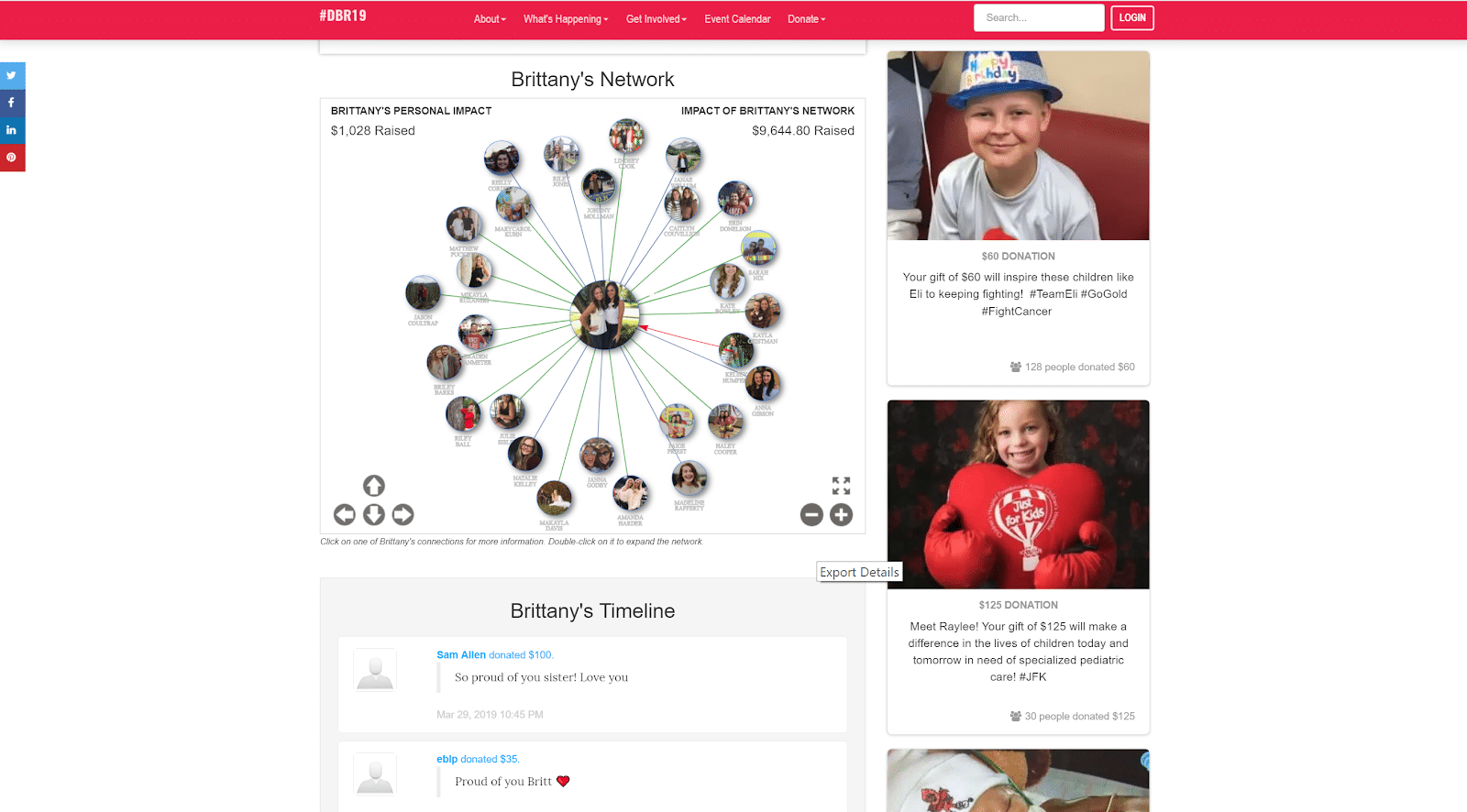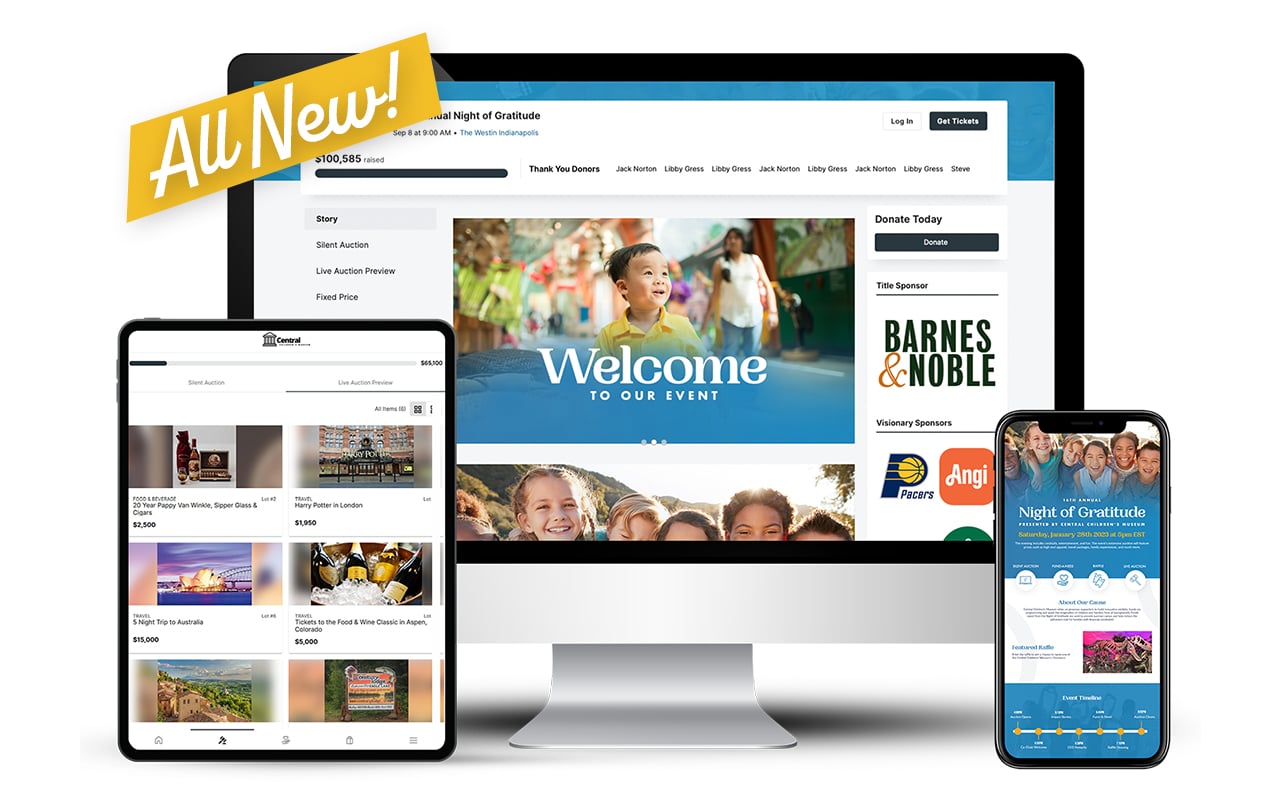What is a Dance Marathon? Get to Know this Fundraising Event
Over the past decade or so, if you’re working in nonprofit fundraising you’ve probably heard of or been to a dance marathon. They are popping up across the country in support of nonprofits of all sizes.
These immersive, and social fundraising events are often multi-day experiences that bring together excitement, engagement, community, action, and big funds.
Although they’re one of the most innovative and successful types of nonprofit fundraising events, dance marathons require detailed planning to ensure success.
Let’s explore surefire strategies to get your next Dance Marathon, moving and grooving:
1. What is a Dance Marathon?
While Dance Marathons have experienced explosive growth in the past decade; But they’ve been around for a long time! Dance Marathon history reaches back to the 1920’s.
Participants in the early dance marathons would dance competitively to see who could dance the longest or to out-dance other participants. During the Great Depression, Dance Marathons provided participants with basic needs – food, shelter, sustenance, and more – while providing them with and entertaining distraction from their hard lives.
More recently, Dance Marathons have become a tentpole event for many universities and colleges to raise money for children’s care programs, especially the Children’s Miracle Network. Today, more than 300 colleges across the U.S. host Dance Marathons, and they’ve raised millions of dollars for a variety of causes.
If there is a single defining characteristic of a dance marathon, it’s the length and intensity of the event. A typical dance marathon lasts anywhere between 24 and 48 hours.
Participants, called dancers, raise money before, during, and after this event through a combination of traditional and peer-to-peer fundraising (P2P) methods and, in return donors pledge to donate or sponsor the participant’s time and energy to ‘dancing’ for a cause.
2. What are the rules of a dance marathon?
Dance marathons are first and foremost social fundraising events, but there are common rules that form the foundation of any dance marathon competition.
Rule #1: Always stay moving:
This is the foundational rule of dance marathons. The sense of excitement and community really stems from this shared sense of constantly moving and dancing for a cause.
- Team Component: Depending on the organization, some dance marathons allow dancers to be part of teams where as long as at least half the team is moving at any given time the other team members can take a break.
- Alternate Activities: Additionally, just because they are called dance marathons doesn’t mean participants have to actually dance the entire time.Activities like sports, talent shows, and other competitions can easily fill the hours and keep participants moving.
Rule #2: No sleep!:
Building off of the ‘always keep moving’ rule, most dance marathons encourage dancers to participate in the full dance marathons, which means staying awake for at least 24 hours at a time.
Dance marathons have become synonymous with pushing your body to its limits, and the ‘no sleep’ rule is one of the main reasons that they are so popular with colleges and younger organizations.
Like any event, however, there are exceptions for the safety of participants. With the right balance of activities, sustenance, and dancing, participants in dance marathons should be able to keep moving the entire time.
Rule #3: Spectators are encouraged:
Although it may seem as though dance marathons lock participants in a gym for a weekend with no connection to the outside world, spectators and visitors are actually encouraged.
In reality, spectators are a great way to raise money during a dance marathon. Popular visitor strategies include:
- Charge visitors a fee to watch the proceedings and root participants on.
- Using social media to promote your event and invite spectators.
- Give dancers incentives, milestones and premiums for attracting spectators.
- Create fun activities or contests to engage spectators and ramp up the energy!
- Make sure marketing materials encourage visitors to bring dancers snacks, coffee, or other treats to make their weekend more enjoyable.
Spending time on an engaging spectator strategy can really create an atmosphere of fun, and help foster those social networks that are so critical to dance marathon fundraising success.
Rule #4: Entertainment is key:
This is more of an organizer rule rather than a participant rule, but it’s important nonetheless. Participants in a dance marathon are giving up their time and physical presence to participate in a charitable event.
If you’re hosting a dance marathon, it’s important for your nonprofit to recognize this sacrifice and strive to provide the right necessities to make the dance marathon an enjoyable experience, including activities and entertainment.
Some popular dance marathon entertainment ideas include:
- Talent shows
- Team competitions
- Indoor volleyball games
- Social Media posting competitions
- Giveaways and more!
3. How do dance marathon fundraisers work?
At their heart, dance marathons are fundraisers and should be able to raise money for a charitable cause. While dance marathon hosts are concerned mainly with putting on an awesome event for dancers, the participants themselves are the ones responsible for raising donations.
This is done through a combination of peer-to-peer and traditional fundraising methods.
TIP #1: The right Peer-to-Peer fundraising tool
First, a nonprofit organization must find a full-service peer-to-peer fundraising platform to support and help effectively raise funds for your dance marathon. This solution should allow the main event to have a best-in-class online fundraising presence, include:
- Customizable participant pages
- Easy registration process
- Fully integrated social listening and engagement tools
- Affinity network tracking
- Easy registration and donation process
- Matching gift functionality
- Milestone and participant incentive awards
A best practice is to make sure your organization has an informative campaign site with FAQs and event details, as well as a general donation page where supporters can make donations at any time.
TIP #2: Custom Participant Pages
Additionally, the peer-to-peer solution should allow every individual participant or team to make their own individual fundraising page to share with colleagues, friends and family to ask for donations.
A great dance marathon peer-to-peer page includes:
- Participant name
- Participant picture
- Link to overall event page and details
- Personal statement in support of the cause
- Fundraising goal and progress to goal
- Personal fundraising amount raised to date
- Overall fundraising goal and progress to date
- Ability to customize the participant page with pictures and images
- Clear Calls to Action and Donation Buttons
- Social network visualization and engagement features
- Impact statements (e.g., your gift of $35 helps fund)
- Donation timeline capabilities
TIP #3: Engaging Social Networks
Next, it’s time for dancers to share their peer-to-peer fundraising page with their networks. The biggest and most effective channel for dance marathons is social media.
Dancers share their pages with their social networks and ask others to share the word with their own networks to create a viral conversation. Additionally, text-based donations work really well with dance marathon fundraisers.
With the right technology participants can automatically email and/or text out messages with a direct link to their donation page to make it easy for supporters to get involved.
TIP #4: Dancing Your Way to Success
Once you’ve planned your dance marathons, secured your technology and enabled your participants to easily fundraise – it’s time for the big day/dance.
During the dance marathon itself is where you final fundraising efforts come to fruition.
Many dance marathons live stream their events online for supporters to watch the events as they occur. To maximize donations, a nonprofit could create challenges or matching gift windows during the event, to help drive maximum donations. Asking spectators to donate with the name of a particular act, timeslot or a specific dancer in the dance competition can help push your efforts over the finish line.
Finally, since dancers will most likely have their phones on them throughout the event, you can ask people to post online about a final live appeal to ensure you hit your fundraising goal.
With donations coming in until the last second, one of the most exciting parts of a dance marathon is the final reveal of how much was raised. During this big moment, dance marathons also celebrate the top fundraisers and donors to thank them for their involvement.
Get Started with OneCause
Successful marathons require powerful fundraising software! The OneCause Fundraising Platform makes giving modern, flexible, and seamless to drive deeper engagement and grow your fundraising. Take a look at this versatile all-in-one fundraising software that meets the expectations of today’s donor, supporting any event, in-person, virtual, or hybrid.
Wrapping Up
- Dance Marathon Fundraising Ideas: 4 Awesome Strategies for Success
- Setting Up a Dance Marathon Fundraising Page: 3 Smart Steps
- The Top Peer-to-Peer Fundraising Ideas for Nonprofits
Ready to give your first dance marathon a whirl (pun intended!)?
Let the experts at OneCause make your nonprofit’s dance-off your best one yet!






